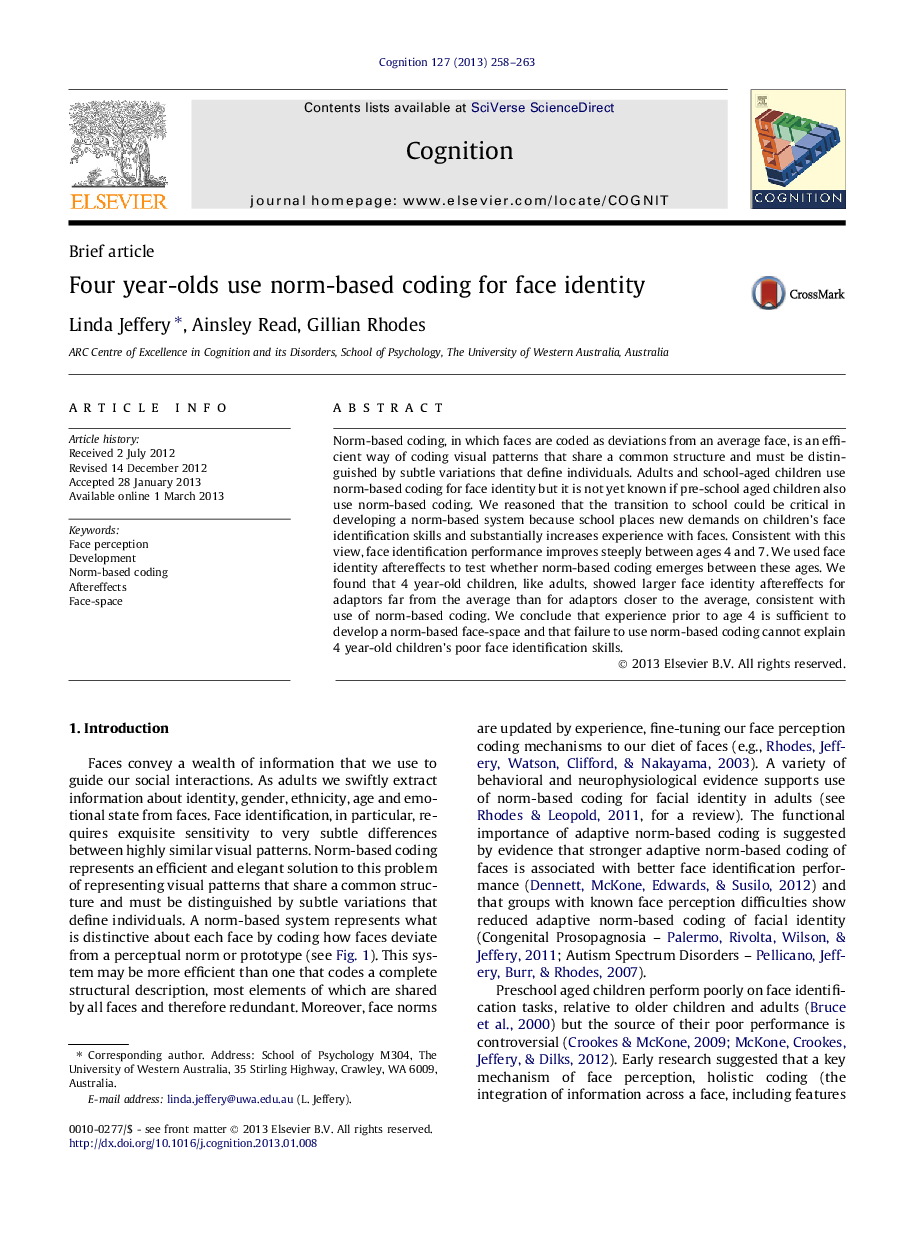| Article ID | Journal | Published Year | Pages | File Type |
|---|---|---|---|---|
| 10457591 | Cognition | 2013 | 6 Pages |
Abstract
Norm-based coding, in which faces are coded as deviations from an average face, is an efficient way of coding visual patterns that share a common structure and must be distinguished by subtle variations that define individuals. Adults and school-aged children use norm-based coding for face identity but it is not yet known if pre-school aged children also use norm-based coding. We reasoned that the transition to school could be critical in developing a norm-based system because school places new demands on children's face identification skills and substantially increases experience with faces. Consistent with this view, face identification performance improves steeply between ages 4 and 7. We used face identity aftereffects to test whether norm-based coding emerges between these ages. We found that 4 year-old children, like adults, showed larger face identity aftereffects for adaptors far from the average than for adaptors closer to the average, consistent with use of norm-based coding. We conclude that experience prior to age 4 is sufficient to develop a norm-based face-space and that failure to use norm-based coding cannot explain 4 year-old children's poor face identification skills.
Related Topics
Life Sciences
Neuroscience
Cognitive Neuroscience
Authors
Linda Jeffery, Ainsley Read, Gillian Rhodes,
